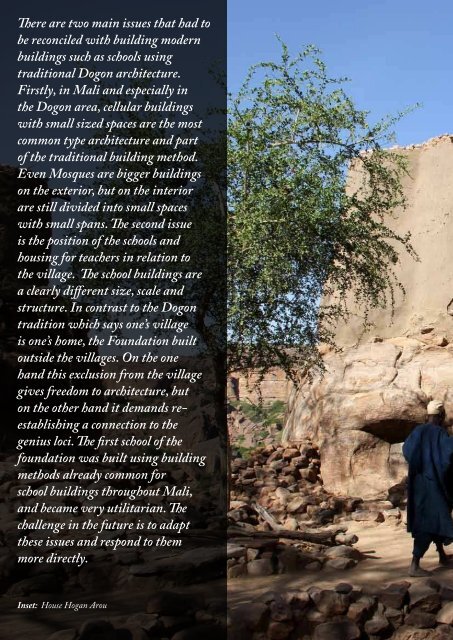ArchiAfrika-April-Magazine-English-final-v2
ArchiAfrika-April-Magazine-English-final-v2
ArchiAfrika-April-Magazine-English-final-v2
You also want an ePaper? Increase the reach of your titles
YUMPU automatically turns print PDFs into web optimized ePapers that Google loves.
There are two main issues that had to<br />
be reconciled with building modern<br />
buildings such as schools using<br />
traditional Dogon architecture.<br />
Firstly, in Mali and especially in<br />
the Dogon area, cellular buildings<br />
with small sized spaces are the most<br />
common type architecture and part<br />
of the traditional building method.<br />
Even Mosques are bigger buildings<br />
on the exterior, but on the interior<br />
are still divided into small spaces<br />
with small spans. The second issue<br />
is the position of the schools and<br />
housing for teachers in relation to<br />
the village. The school buildings are<br />
a clearly different size, scale and<br />
structure. In contrast to the Dogon<br />
tradition which says one’s village<br />
is one’s home, the Foundation built<br />
outside the villages. On the one<br />
hand this exclusion from the village<br />
gives freedom to architecture, but<br />
on the other hand it demands reestablishing<br />
a connection to the<br />
genius loci. The first school of the<br />
foundation was built using building<br />
methods already common for<br />
school buildings throughout Mali,<br />
and became very utilitarian. The<br />
challenge in the future is to adapt<br />
these issues and respond to them<br />
more directly.<br />
Inset: House Hogan Arou<br />
50 51


